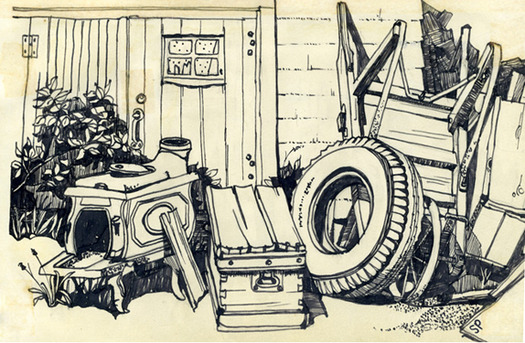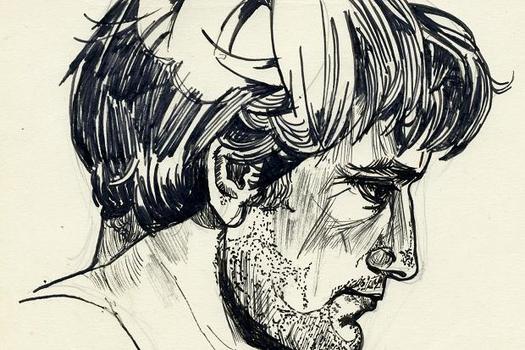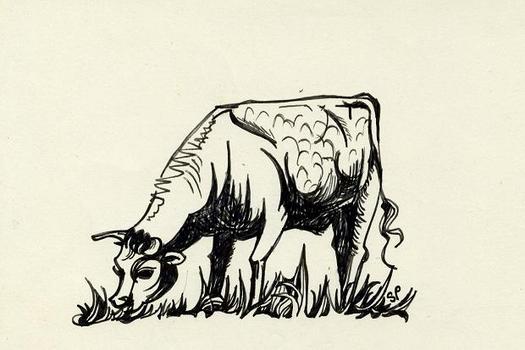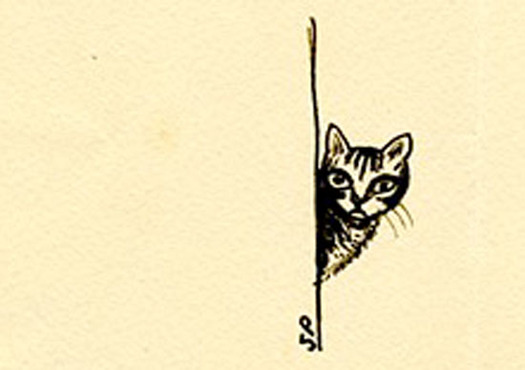
The Pleasure of Odds and Ends.
It had been a number of years since I’d read any Sylvia Plath, since I was a teenager, and I worried when I picked up her poems the other week that I wouldn’t find anything in them, not being a teenager. The arguments against them are well-known, even famous. They glamorize suicide. They lack empathy. They’re viciousness and naked ambition, the kind of torrential whining that comes only from the unquestioned sense that you’re all-important and blameless, whining that encouraged generations of confessional piffle also written from the perspectives of damaged children trading on their suffering for praise. Her personal life and personal afterlife, with its wake of torments and suicides, made the dangers of her poetry seem all the more real.
In short, it seemed like poetry for teenagers — moody, self-absorbed, insecure, drawn to danger. Maybe it is. But what struck me when I read it all again was the immersiveness of her late poems, the way the torrent of work from the last year of her life, like van Gogh’s, draws you into its suffering as if it had always been yours.
Take part of a famous poem like “Lady Lazarus”:
The second time I meantYou never know whether she’s taunting you or looking for comfort with her morbid bravado and storybook rhymes. She imagines her second suicide attempt as like a child escaped to the world of the sea: “They had to call and call/And pick the worms off me like sticky pearls.” This is so evocatively put — “pick” and “sticky” even stick together, as an excited child would make them — that it’s hard not to feel her childish despair, the drive to shock people with your problems as if they could do anything about them, the wish that death is just another childlike dream, a wish that sets you up to think about death as you did as a child, with absolute terror.
To last it out and not come back at all.
I rocked shut
As a seashell.
They had to call and call
And pick the worms off me like sticky pearls.
Dying
Is an art, like everything else.
I do it exceptionally well.
I do it so it feels like hell.
I do it so it feels real.
I guess you could say I’ve a call.
It’s easy enough to do it in a cell....
Not every part of her late sprint is defensible or even palatable. “The ovens glowed like heavens, incandescent,” she wrote a couple of months before she killed herself with an oven. “And my baby a nail/Driven, driven in./He shrieks in his grease.” He killed himself forty-seven years later. I rarely feel the seductions of death in these poems; they’re just sad. They read like straightforward expressions of violent despair. It’s when she seemed to be possibly writing her way out of it, not just writing within it, that she also wrote as though she might need you, for her to punish or for her comfort. It’s hard not to care then, and hard not to let her conflicts haunt you when you care.

Untitled (Ted Hughes, 1956). Detail.
If Plath’s mature poetry dates to 1956, its turning point was 1961, two years before her death. With exceptions such as “The Colossus” (1959), the former poems express moods, and the latter evoke her emotional life. Compare, for example, the end of “Full Fathom Five” (from 1958) with the end of “Mirror” (from 1961). The first is an early poem about her father, who died when she was eight. (“Full fathom five thy father lies,” sings the spirit in Shakespeare’s Tempest after whom Plath named her last book, Ariel.) “Your shelled bed I remember,” writes Plath. “Father, this thick air is murderous/I would breathe water”—and swim with him, one imagines. While tenderly put, her wish is straightforward, unlike the gorgeous strangeness of a similar transformation in “Mirror,” in which she conveys her guilt about whom she’s turning herself into:
Now I am a lake. A woman bends over me,“A terrible fish”: an woman’s concern with her unhealthy dreams, and a girl’s intense vague discomfort at the approach of a strange old woman. This trick of perspective was the linchpin of Plath’s mature style: her capacity to inhabit adult and infant at once.
Searching my reaches for what she really is....
In me she has drowned a young girl, and in me an old woman
Rises toward her day after day, like a terrible fish.
I barely find traces of it in her earlier poems. They have plenty of skill and intelligence, but they don’t have her voice (her voices). It’s tempting to say that she learned to talk as a child when she began to have children, in 1960, but this ignores the mixture of child and adult in her early visual art, as you can tell from the handsome selection of her pen and ink drawings published by Harper in November 2013. The drawings are from 1956 and 1957, the period in which Plath, a graduate student at Cambridge, met and married the poet Ted Hughes and ran off with him to France, Spain, America. There are drawings from each of those places.

Untitled (Cow)
Plath adored art, but she did think of herself as a writer, and the drawings, mostly sketches, are never as ambitious as even her throwaway poems. But the drawings get across her sensibility, which she thought of as a kind of primitivism. Surfaces are simple, edges are soft, animals’ eyes are quite wide. The shapes look a little fantastical — the stoves, for instance, as though they hop around the room. It’s not a child’s world — leave that to her children’s books — but a grown-up world seen as if through the eyes of a child. Yet Plath, being Plath, left nearly everything just a bit menacing as well. She couldn’t draw a flower without letting it wilt.
Her pots are mostly cracked, like her horse chestnuts. Her fruit looks inedible. Her willow is withered, like her Wuthering Heights. Her manors and tenements and churches and chapels all look uninhabited, and the handful of people in street scenes in Paris are faceless. The one smiling woman, a corn vase, is fake. The kettle looks set to explode.

Curious French Cat
There are a few exceptions. Her cat looks as harmless as cats can, and she drew her bulls with genuine tenderness. (Cows always seem kind in her writing, for whatever reason.) More tender still is her drawing of Ted Hughes from 1956, which is hard not to see as a pure expression of her early infatuation with him. She drew him in profile with tousled hair and strong features, dark skin and soft, focused eyes looking off in the distance. This the man whom she called “The Vampire,” “The Jailer” after he had an affair and left her in the fall of 1962. But she was all illusion before the violent disillusionment, writing her happiest poem of 1956 as an “Ode to Ted,” which sounds almost parodic in its ebullience and imitation of Gerard Manley Hopkins’s sprung rhythm:
Ringdoves roost well within his wood,This is a bit silly or at least antiquated — the idea of the earth leaping up to laud Ted Hughes’s blood — but her early poems are full of this sort of image of people and landscapes changing each other. “Your eyes foist a vision dazzling on the wind.” “Her lover’s gestures unbalance the air.” “The beggars .../Baffle the dark, the pitying eye.” “When my eyes shut/These dreaming houses all snuff out.” “I saw slow flocked cows move,” and “Sweet grass sprang for their grazing,” of course. What are these images but ways to see the world as if she had drawn it? It’s as though Plath began to find a poetic style by describing her visual style, although it took years to learn how to recreate her sensibility in that other medium, to write the poems of despair with glimmers of childishness that call back to the childlike drawings with hints, wherever you look, of something not quite right.
shirr songs to suit which mood
he saunters in; how but most glad
could be this adam’s woman
when all earth his words do summon
leaps to laud such man’s blood!
